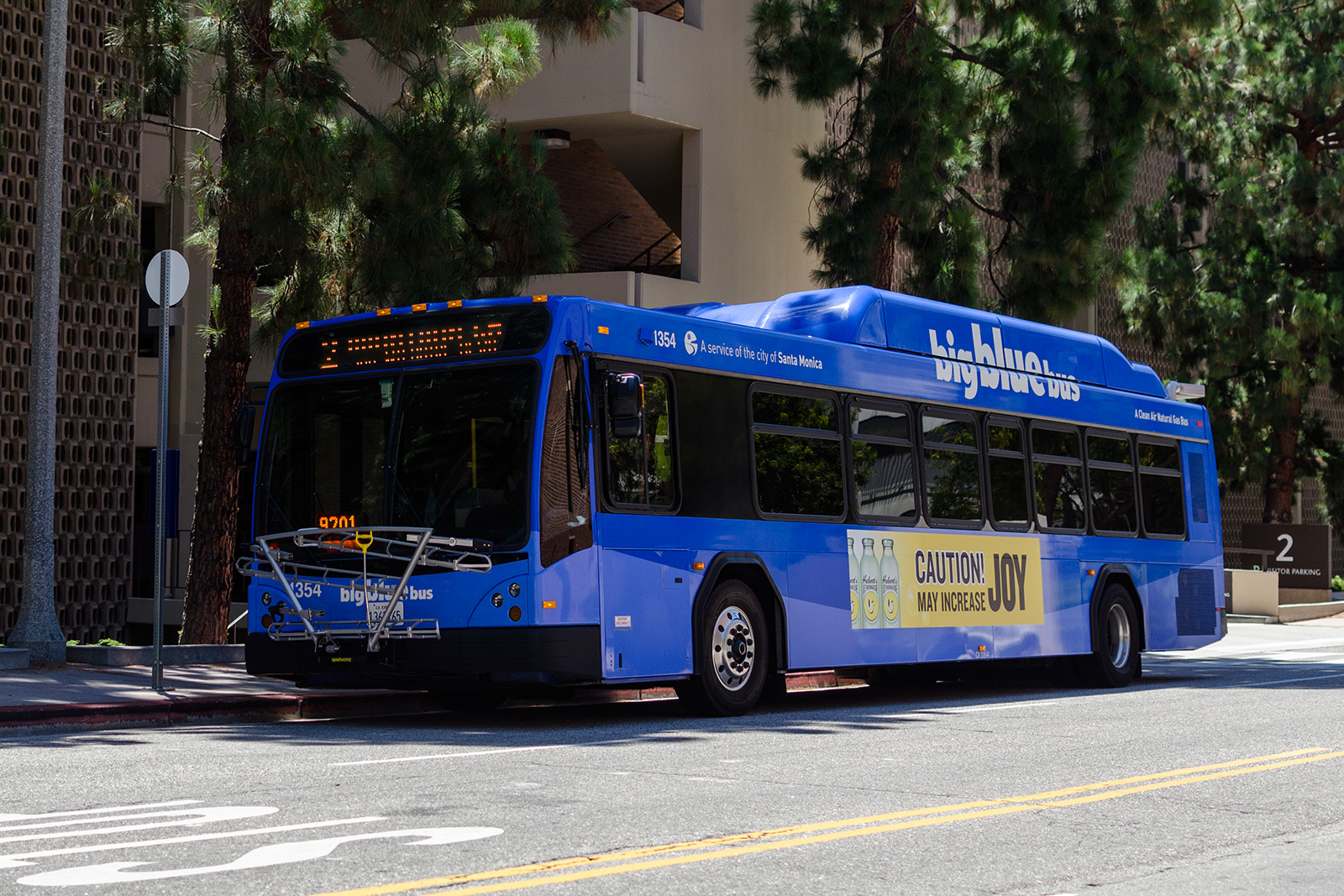Jonathan Friedland: Fewer stops would increase Santa Monica Big Blue Bus ridership

Ridership of the Santa Monica Big Blue Bus is declining. The Big Blue Bus needs to wait at fewer stops to speed up travel time, which would attract more students to use the buses (Daily Bruin file photo)
By Jonathan Friedland
June 1, 2017 9:43 p.m.
Taking the bus to Santa Monica from UCLA can take upward of 45 minutes, not including the walk to the Westwood bus stop.
When students have the option of saving time while paying slightly more for an UberPool, it’s no wonder Santa Monica Big Blue Bus ridership has dropped 12 percent in the last fiscal year.
The problems surrounding the Los Angeles transportation system become evident when so many residents dismiss the bus system, in the face of stupendous traffic and bus lanes.
In order to increase ridership, Santa Monica needs to modify its bus schedules to reduce the number of stops each bus waits at. Doing so will cut travel time and encourage more people to take the bus as a means of transportation.
As of now, the Big Blue Bus can transport students to popular locations such as Brentwood, Santa Monica and Venice. In hopes of attracting more riders, the bus line invests heavily in Westwood, specifically offering UCLA students and faculty 50-cent fares, instead of the usual $1.25, with the swipe of a BruinCard.
Despite these efforts, however, ridership continues to decline. Santa Monica’s strategy needs to change.
The Big Blue Bus stops too frequently – especially considering how small LA blocks really are. For example, Line 1, or the Santa Monica Boulevard bus line, stops every two blocks, inevitably causing rides to drag on.
Ethan Cordes, a second-year electrical engineering student, rode the Big Blue Bus to tutor a high school student in Sawtelle, but the traveling back and forth was a hassle, he said.
The solution isn’t that hard to implement. By halving the number of stops, the Big Blue Bus can increase the bus line’s efficiency and get riders to their destinations in a timely fashion.
To illustrate, the farthest ride would be in the middle of two stops and riders would only have to walk a single block to the closest bus stop. Eliminating every other stop would only make riders walk a maximum of two blocks to get picked up but halve the ride time. And as far as I know, walking an extra block hasn’t hurt anyone yet.
In fact, this method has proven to be effective in other cities such as San Francisco, where public transportation has continued to thrive.
San Francisco is second in the nation in rides per capita, with each resident taking an average of 131 trips per year. Bus lines in San Francisco stop far less frequently than lines in Santa Monica. Thus, riders travel from one part of the city to another in a much faster manner.
However, LA is a completely different story. When examining trips per capita, the bustling greater LA area, with a population of over 15 million people, rests just above Davis, California, which has a population of just 70,000 people.
More people in Europe and San Francisco depend on public transportation in part because the systems feature faster bus lines with fewer stops. As opposed to raising fares, like Santa Monica did one year ago, enticing more bus riders will generate more revenue for the city.
Proponents of Santa Monica’s bus lines will argue that ride sharing services like Uber and Lyft have shifted ridership away from public transit. However, they fail to mention that San Francisco’s bus ridership has held steady in recent years, while the city maintains a strong following for ride sharing services.
Certainly, the recently built Expo Line may seem to draw away bus riders onto the light rail. But that’s not a sensible assertion either. Students comprise a plurality of Santa Monica’s bus riders, and the closest Expo Line station is 3 miles from UCLA. It’s impractical for students to take the Expo Line to Santa Monica when the bus station is much closer to campus.
Instead, the problem lies within the inefficient bus system, which has failed to compete with more expensive ride sharing services.
Cutting the number of stops is a good place to start.

